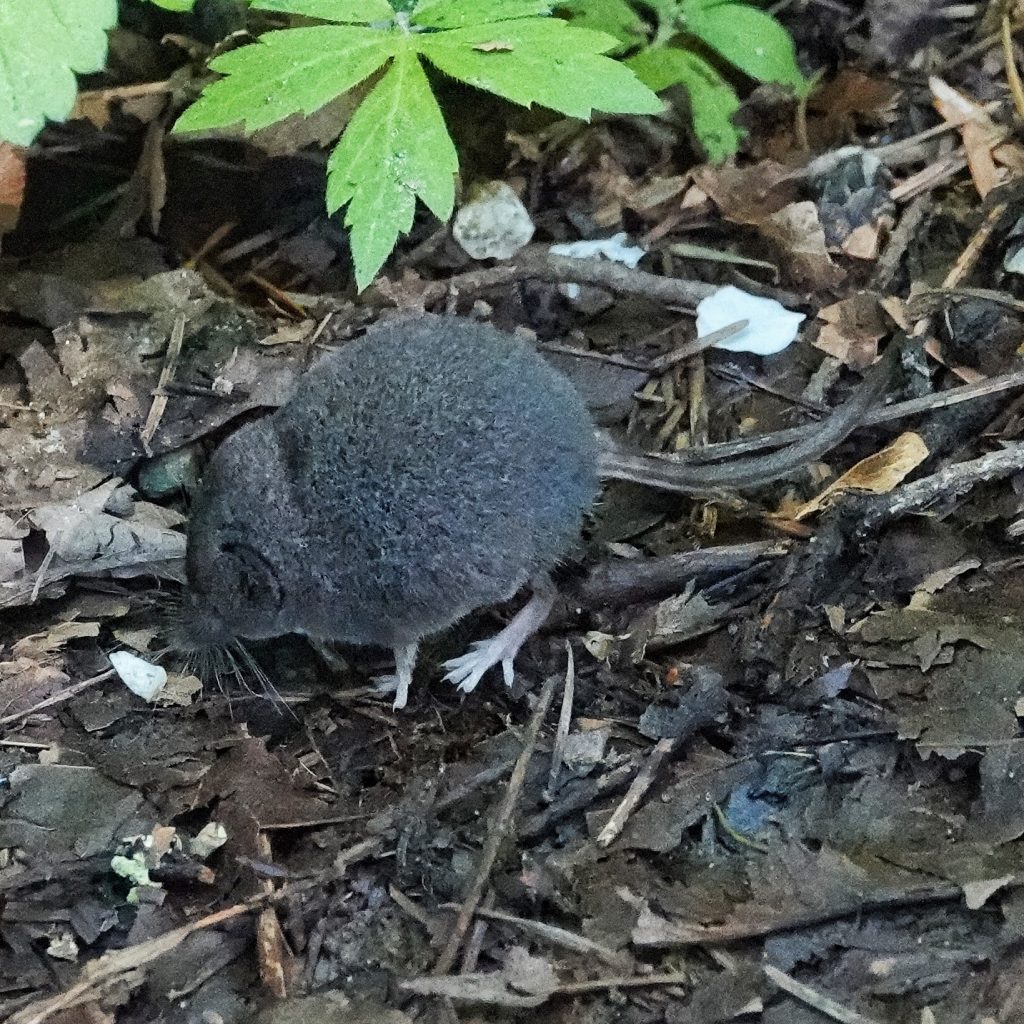
I was strolling along the Lacamas Creek Trail in Camas, Washington last week, happily photographing spring wildflowers, when I noticed a woman ahead of me crouched near a bracken fern with her phone held in a photographic position. When I got within easy speaking distance I asked if she had found a cool bug, to which she replied that she thought she’d found a mole! I got all kinds of excited, because I’ve only ever seen one live mole above ground, but my first thought when I actually saw it’s relatively long tail was that it was an American shrew mole (Neurotrichus gibbsii), a very interesting species that I have also only seen one time, and that sighting was much obscured by brush.
For those curious about my absence, and the changes in form of these profiles, please see my blog post ‘Equinoctial Evaluations’.
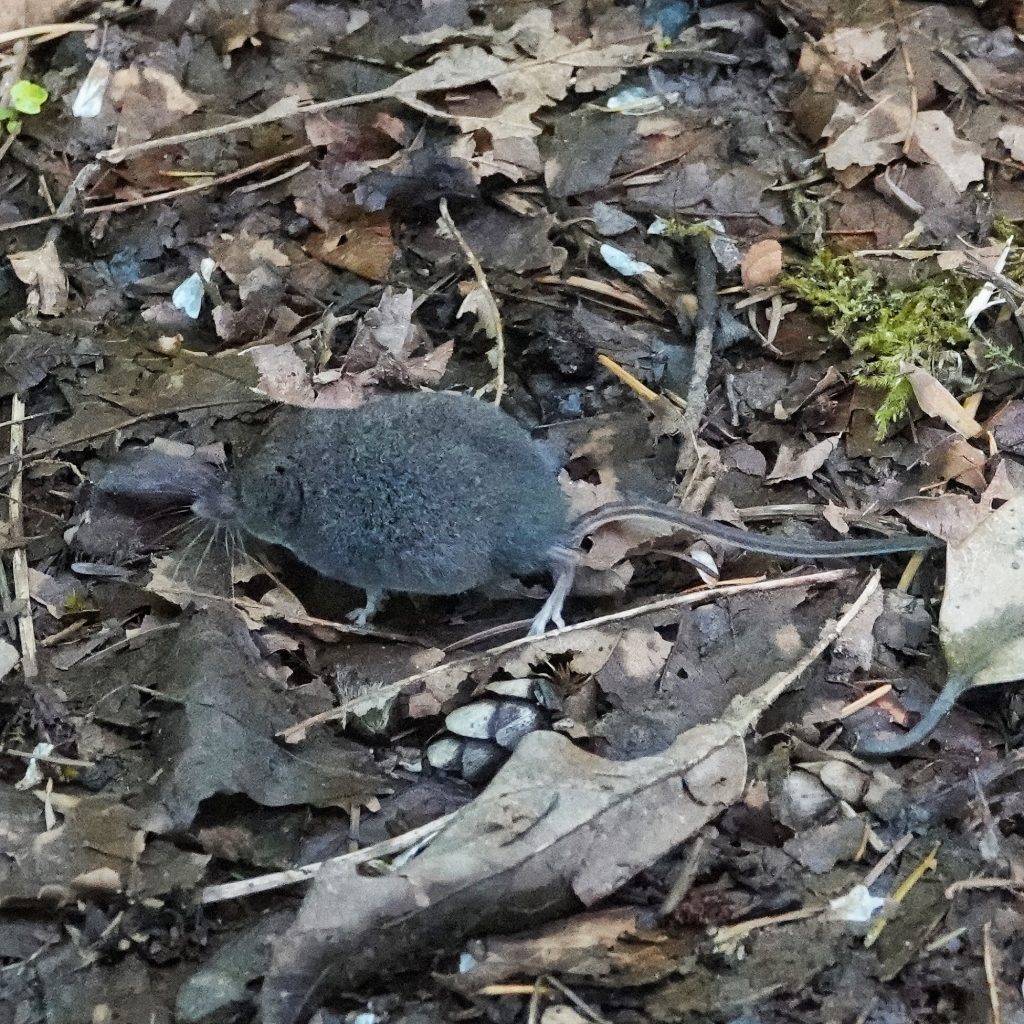
But as I started frantically snapping photos I realized that the tail was not only almost the length of the body but was also short haired and bi-colored, and that the conformation of the body was much more shrew-like than the thick-necked shrew mole, as well as having much smaller front paws than the equipped-for-digging shrew mole. It was much less frenetic in its movements than any shrew I’d ever seen, and allowed us (I probably owe that woman an apology for horning in on her wildlife moment and maneuvering myself to gain the better photographic angles, without any regard for her viewing experience) to observe it for at least 90 seconds, before moving off casually into the trailside cover.
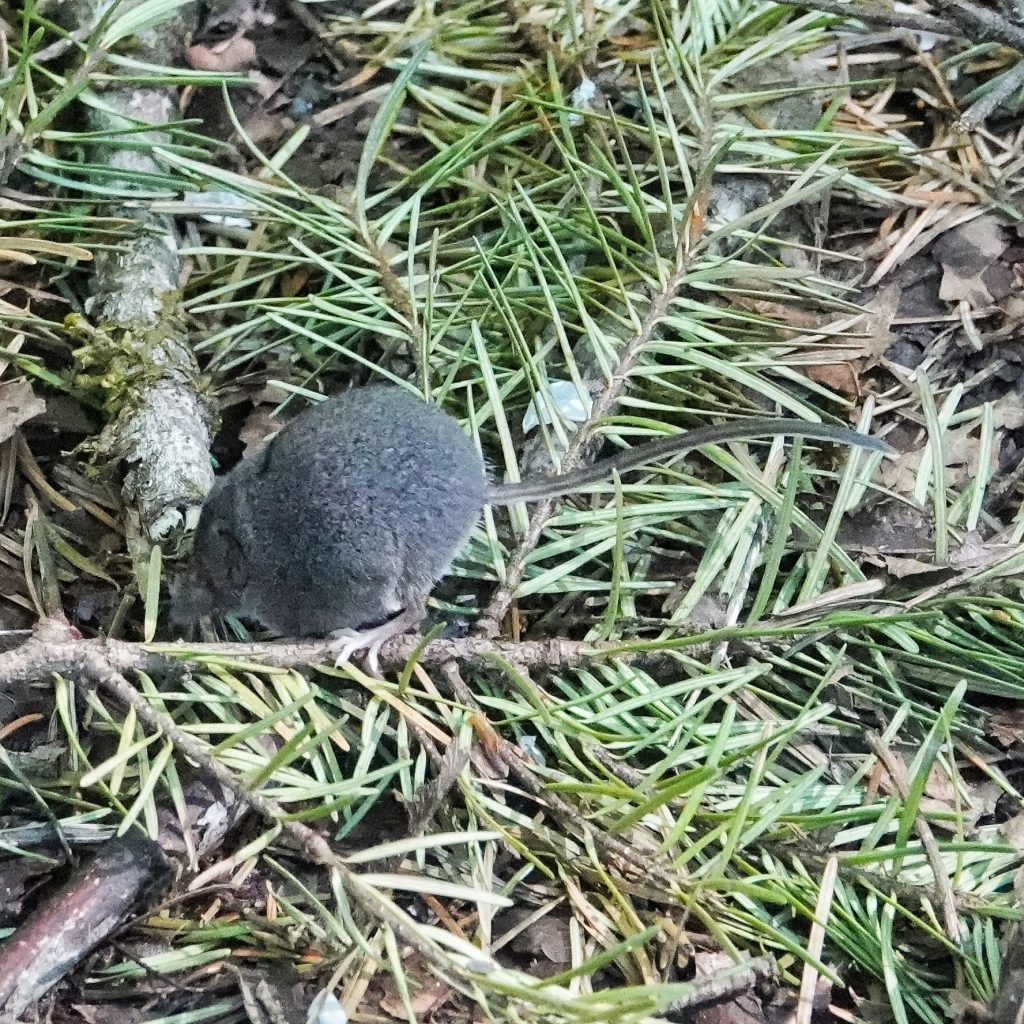
Since I did not even attempt to capture it, I cannot be absolutely positive that it was (and presumably still is) a Trowbridge’s shrew (Sorex trowbridgii), and ‘Mammals of Oregon and Washington (Eder/Ross; 2002) says ‘…differences between most shrews are slight, and identification is nearly impossible without a technical key and a specimen in hand’, but that is the best fit, based on the size, proportional length and sharply bicolored tail, white feet, and overall dark coloration. The experts also say that it eats more plant based material than most other shrews, and according to ‘Mammals of Oregon and Washington’ (Eder/Ross; 2002) they tend to “collect and store seeds, a behavior not reported in other North American shrews”, which might account for the generally more laid back approach to foraging that I observed.
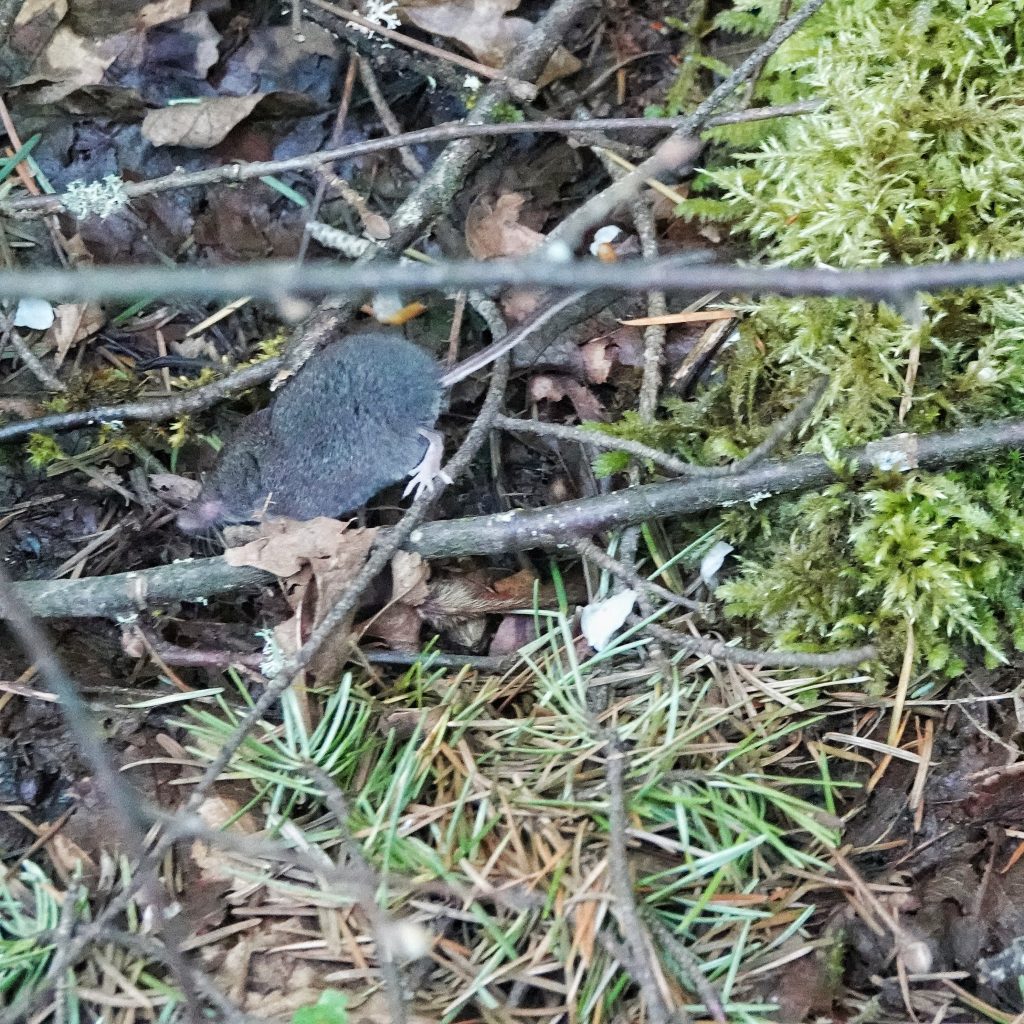
Small mammals, especially rodents and members of Eulipotyphla (which includes the American moles and shrews), will probably always be an underrepresented group on this site. Many of them are not only nocturnal, but much of their lives are lived underground. And even when I do see one, like this shrew or the Pacific Jumping Mouse (Zapus trinotatus), it is going to require some luck to identify it, because the salient characteristics to delineate species are often dental, or otherwise hidden traits that won’t be obvious in a photo. But that doesn’t mean that it’s not always fun to find them, and if I let myself be discouraged by my inability to label them, then I am foolishly substituting a concept about them for the wondrous, flesh and blood mystery that they truly are.
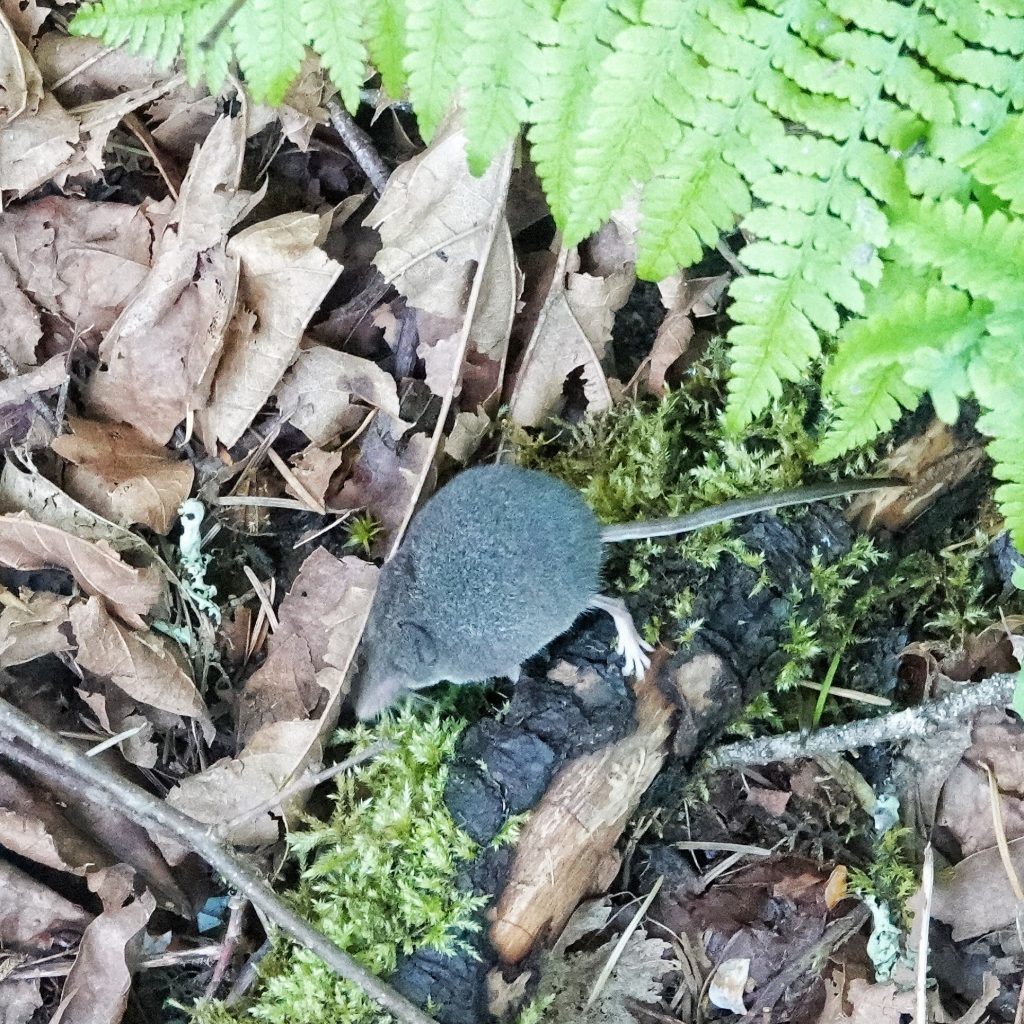
“This forest-dwelling shrew occurs with several others, including Sorex vagrans, S. monticolus, and S. pacificus. Trowbridge’s shrews are less tied to water in their distribution, and are more closely associated with the litter layer of mature forests, rather than forest openings and herbaceous layers. Dalquest (1941) suggested that Trowbridge’s shrews are outcompeted by vagrant shrews in wet areas in Washington. Terry (1981) suggested that Trowbridge’s shrews avoid moist areas because of their preference for burrowing and foraging in litter, and suggested that vagrant shrews are outcompeted in drier areas. No data found to distinguish microhabitat selection from competition for these species.” Harris/Shellhammer/Granholm; California Wildlife Habitat Relationships System; 2000.

Description– Body length- 2 3/8-2 7/8”; Tail length- 1 7/8-2 3/8”; “Trowbridge’s shrew is a medium-sized shrew, distinguished from other Oregon shrews by its dark-brown or grayish black pelage on both dorsum and venter, and its sharply bicolored tail, white below and dark brown or grayish black above.” Oregon Department of Fish and Wildlife page for Trowbridge’s shrew
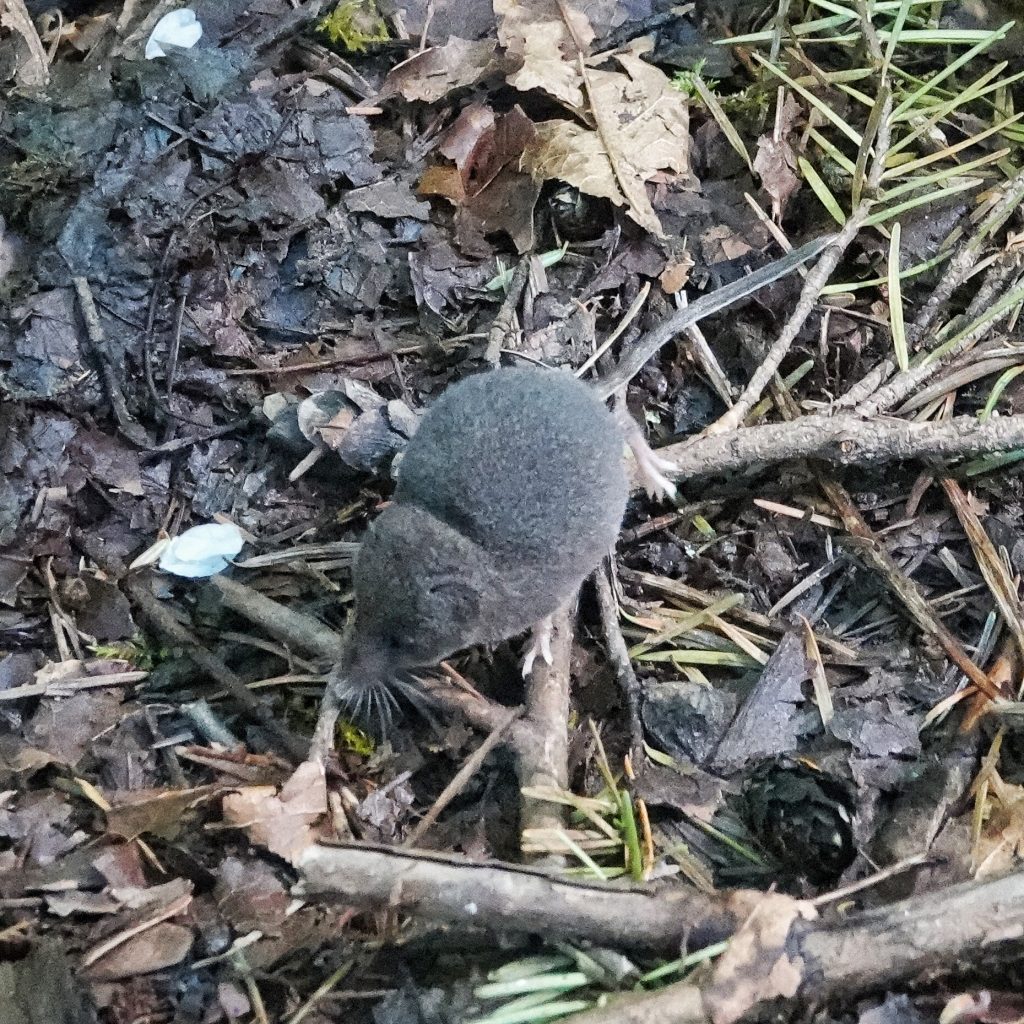
Similar species– Marsh shrews (Sorex bendirii) are larger and lacks a bicolored tail; water shrews (S. palustris) are larger and their body is distinctly bicolored, being much lighter below; montane shrews (S. monticolus) and vagrant shrews (S. vagrans) are smaller, and have proportionally shorter tails; Baird’s shrews (S. bairdii) and Pacific shrews (S. pacificus) have tails that are only faintly bicolored; masked shrews (S. cinereus) and fog shrews (S. sonomae) are much browner; S. preblei, S. merriami, and S. hoyi do not occur in the same range.
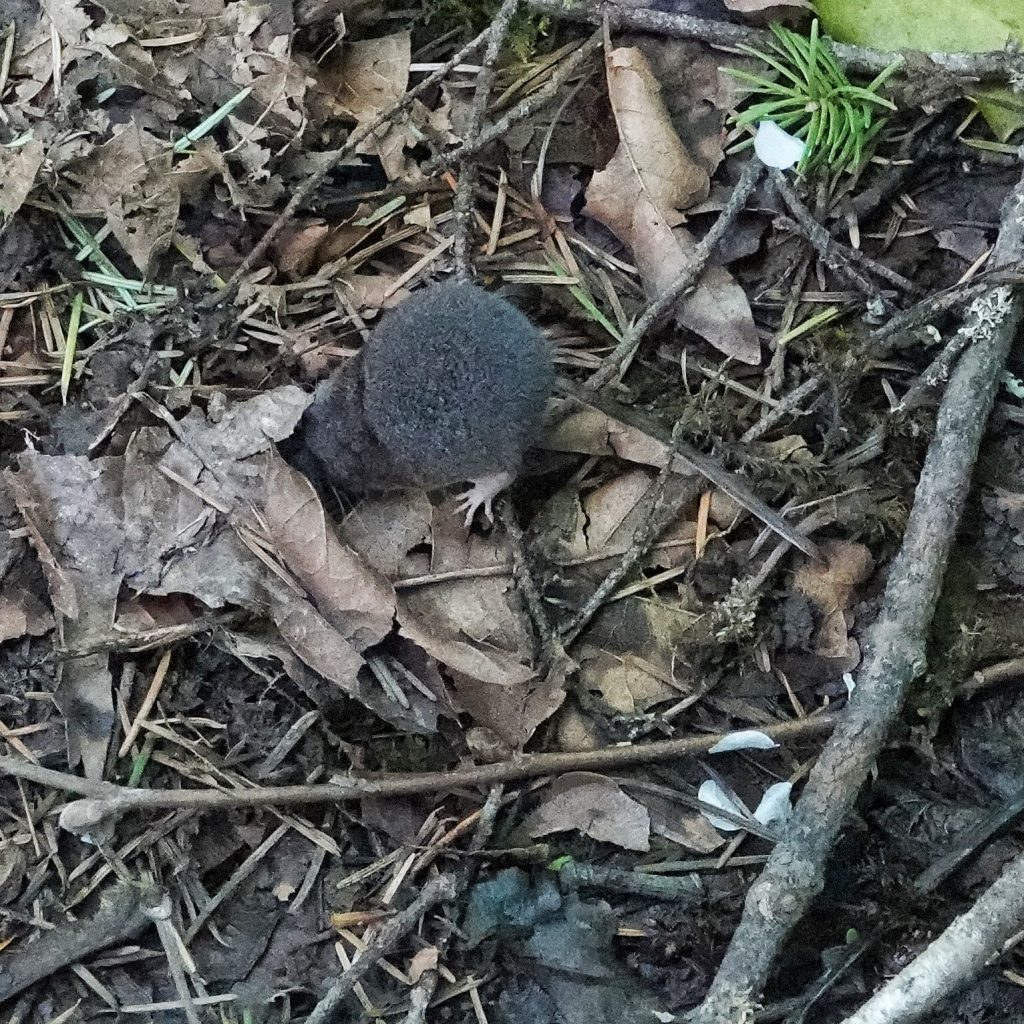
Habitat– “Mature forest (dry or moist) with abundant ground litter; forested canyons and ravines, and swampy woods; deep rank grass near salmonberry thickets (Destructioin Island off Washington); riparian fringe areas (but not streamside); under chaparral (at southern edge of range); cut forest if sufficient ground cover present (George, in Wilson and Ruff 1999; George 1989)” BC Conservation Data Centre: Species Summary
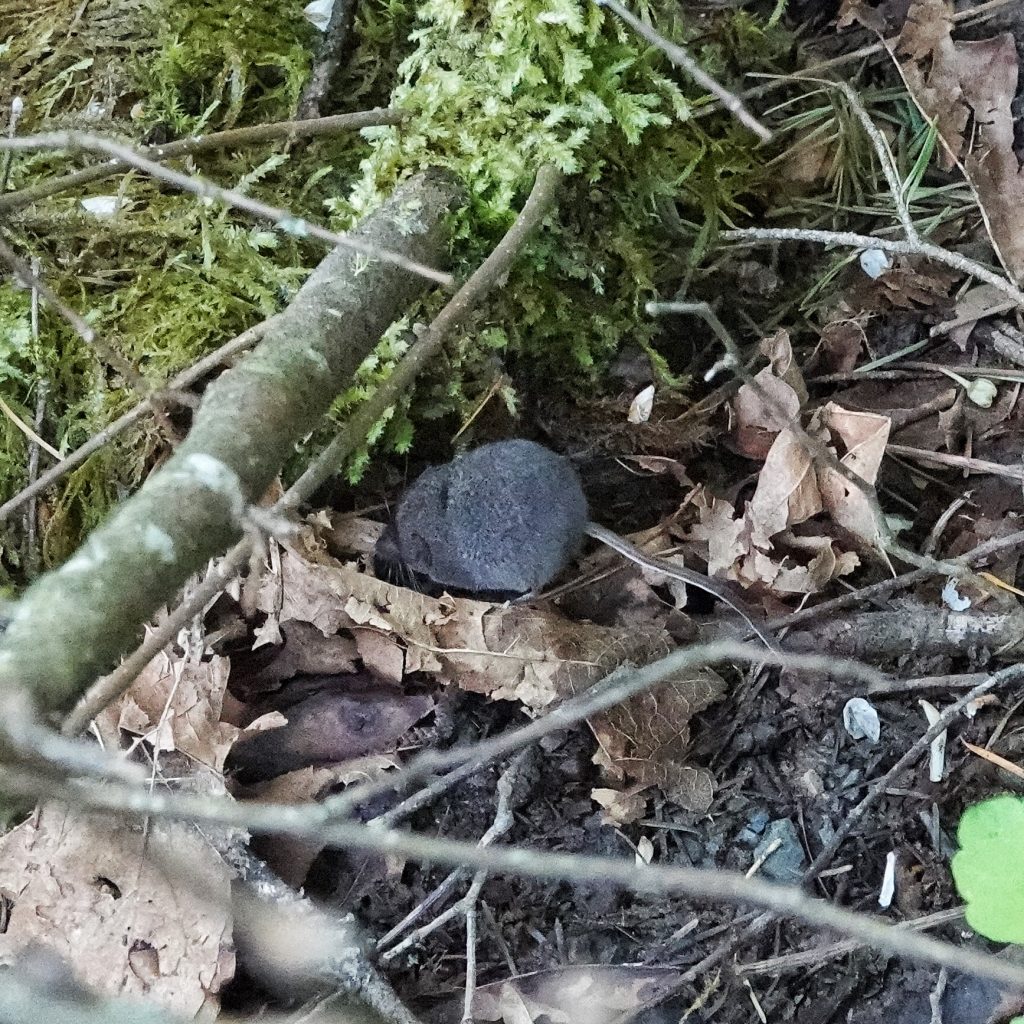
Range– “Trowbridge’s shrew is common in mature coniferous forests of the Pacific Coast, Sierra Nevada, and Cascades, ranging south along the coast to Santa Barbara Co., and in the Sierra Nevada to Kern Co. This shrew is most common in redwood, Douglas fir, ponderosa pine, montane hardwood-conifer, and mixed conifer forests with well-developed shrub understories and litter layers. Also occurs in montane riparian, valley foothill hardwood and hardwood-conifer, red fir, and chaparral habitats. In the Sierra Nevada, the species is limited to the western slope and found at elevations from 1230 m to 2300 m (4040 ft to 7550 ft) (George 1989).” Harris/Shellhammer/Granholm; California Wildlife Habitat Relationships System; 2000
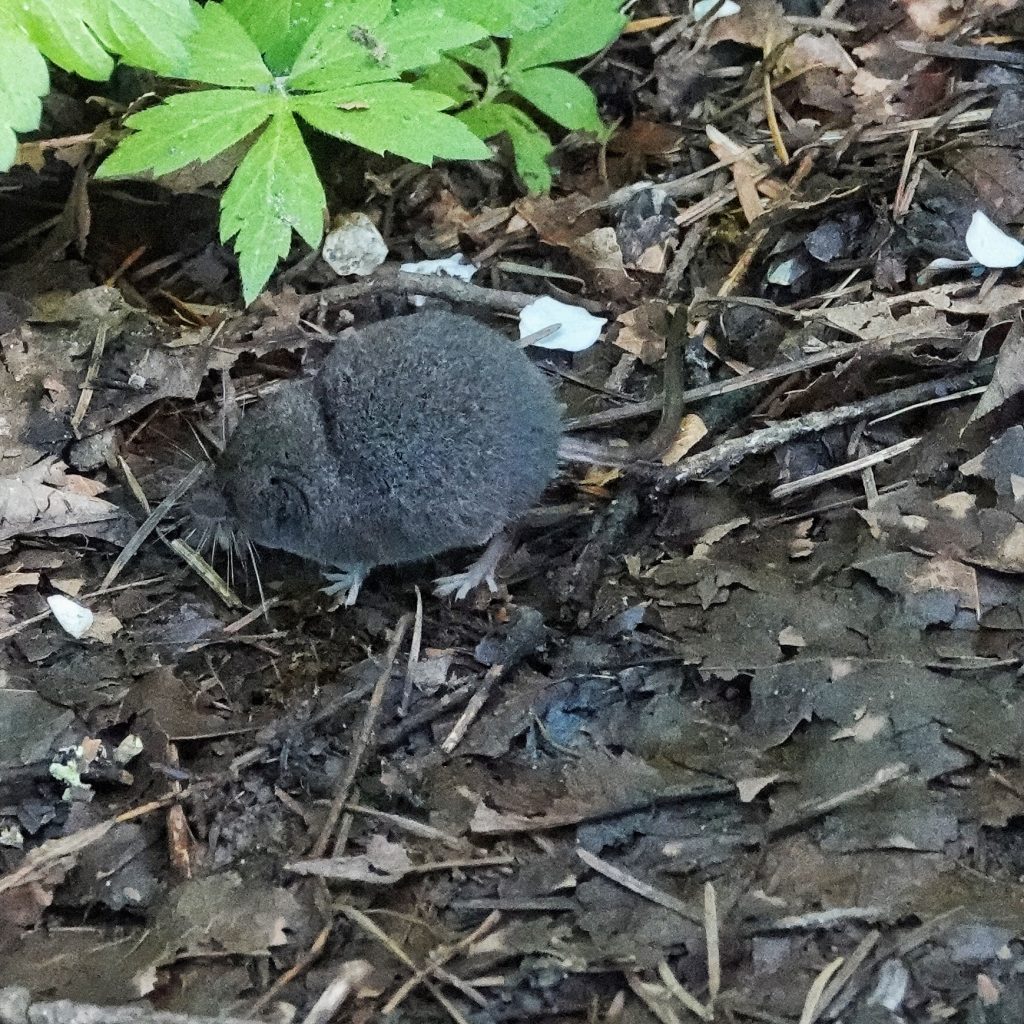
Eats-“Major foods include insects, spiders, centipedes and worms. Has been reported to eat the seeds of Douglas-fir (Moore 1942), and will eat a variety of seeds, as well as animal foods, in captivity (Terry 1978). This shrew forages in litter and moss, as well as in burrows…unlike many other shrews, distribution not closely tied to water, suggesting that drinking water may be unnecessary.” Harris/Shellhammer/Granholm; California Wildlife Habitat Relationships System; 2000.
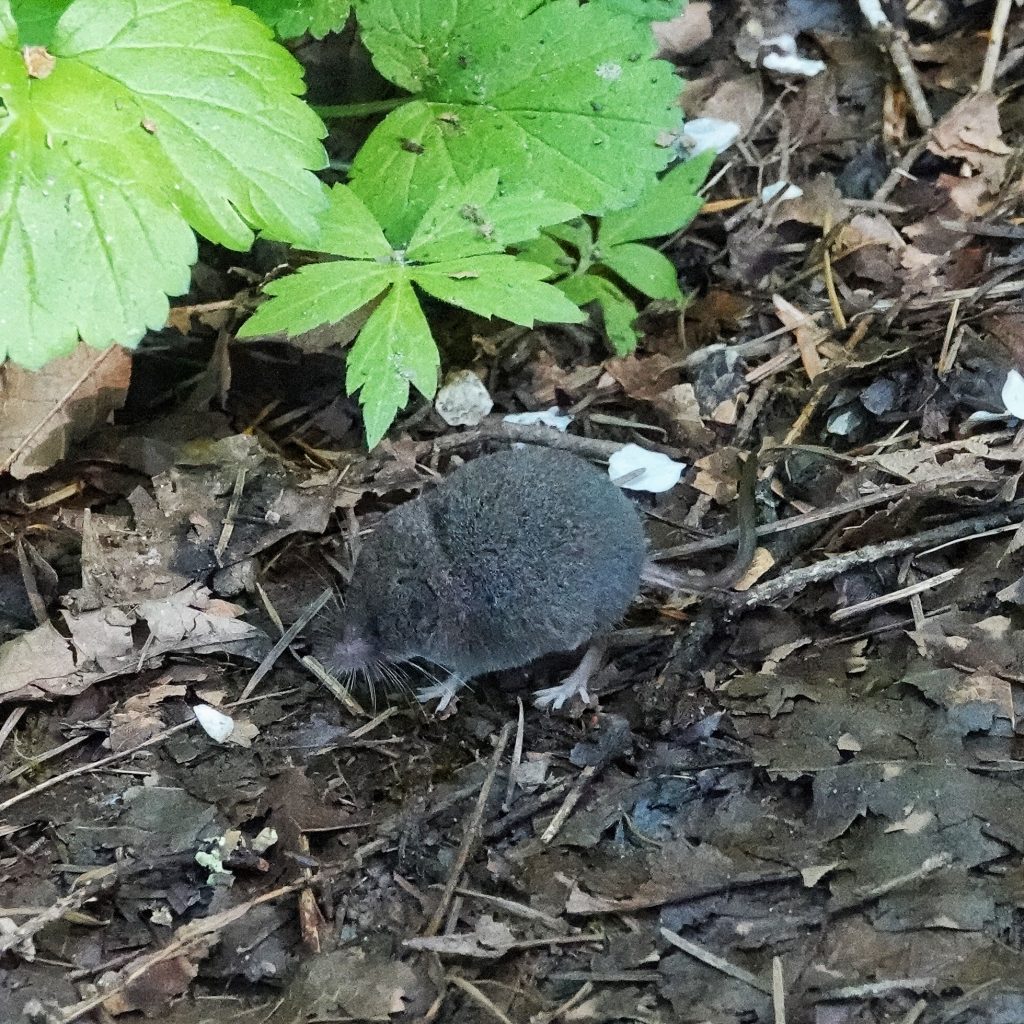
Eaten by– “Owls, weasels, and Pacific giant salamanders are predators.”Harris/Shellhammer/Granholm; California Wildlife Habitat Relationships System; 2000. Probably also preyed upon by any carnivore that can catch and subdue them.
Adults active– “Yearlong circadian activity (George 1989). May be active at any time of day or night.” Harris/Shellhammer/Granholm; California Wildlife Habitat Relationships System; 2000.
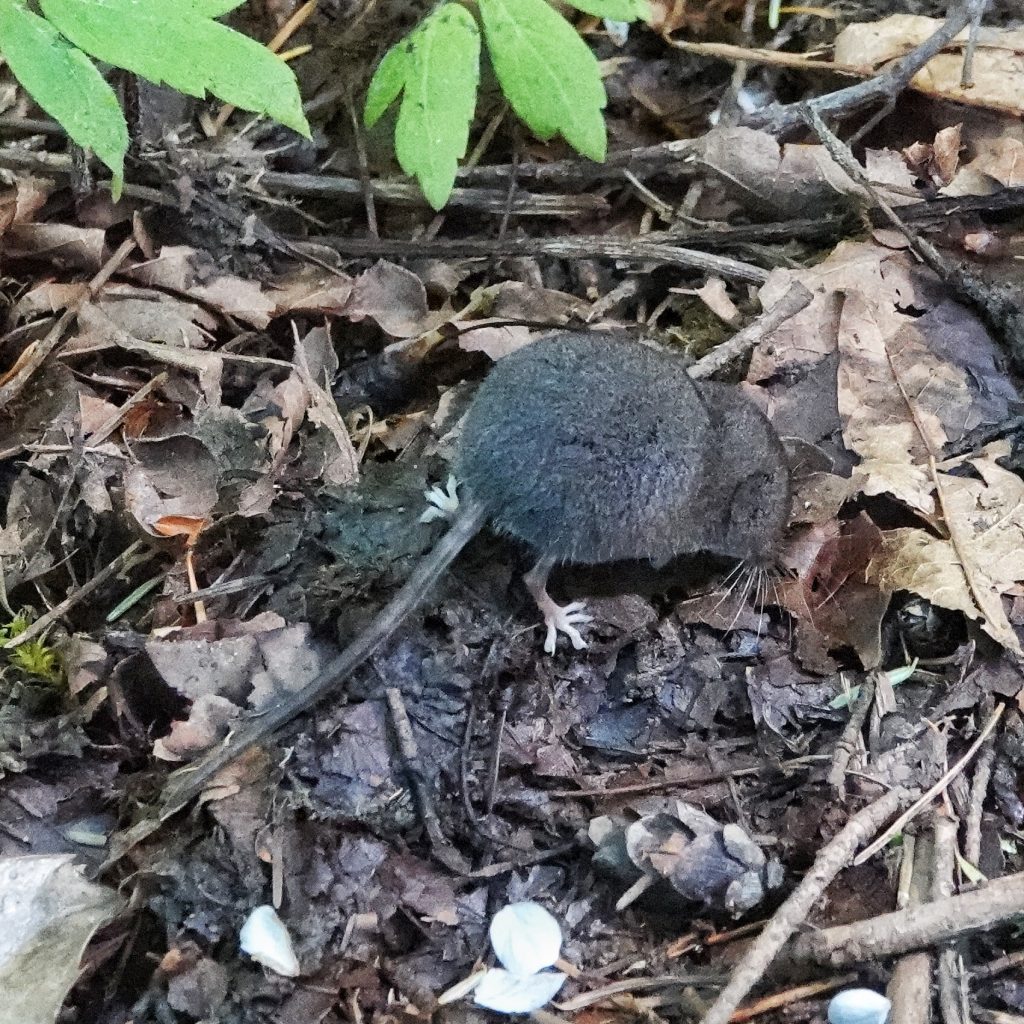
Life cycle-“Nests under logs or in shallow holes…Trowbridge’s shrew mates from February to May. Pregnancies occur from April to May, and most births occur during April to June. Average litter sizes reported include 5 (range 1-6) (Jameson 1955) and 3.8 (range 3-5) (Gashwiler 1976b). Postpartum pregnancy is common, and this species frequently has 2-3 litters per yr. The breeding season may be earlier, or later, depending on the sun exposure of a particular site (Jameson 1955).” Harris/Shellhammer/Granholm; California Wildlife Habitat Relationships System; 2000. “Age of sexual maturity less in areas with warmer climate. Maximum life-span estimated at about 18 months. Populations decline after forest wildfires. Fall population tends to be about double spring population (George 1989).” BC Conservation Data Centre: Species Summary
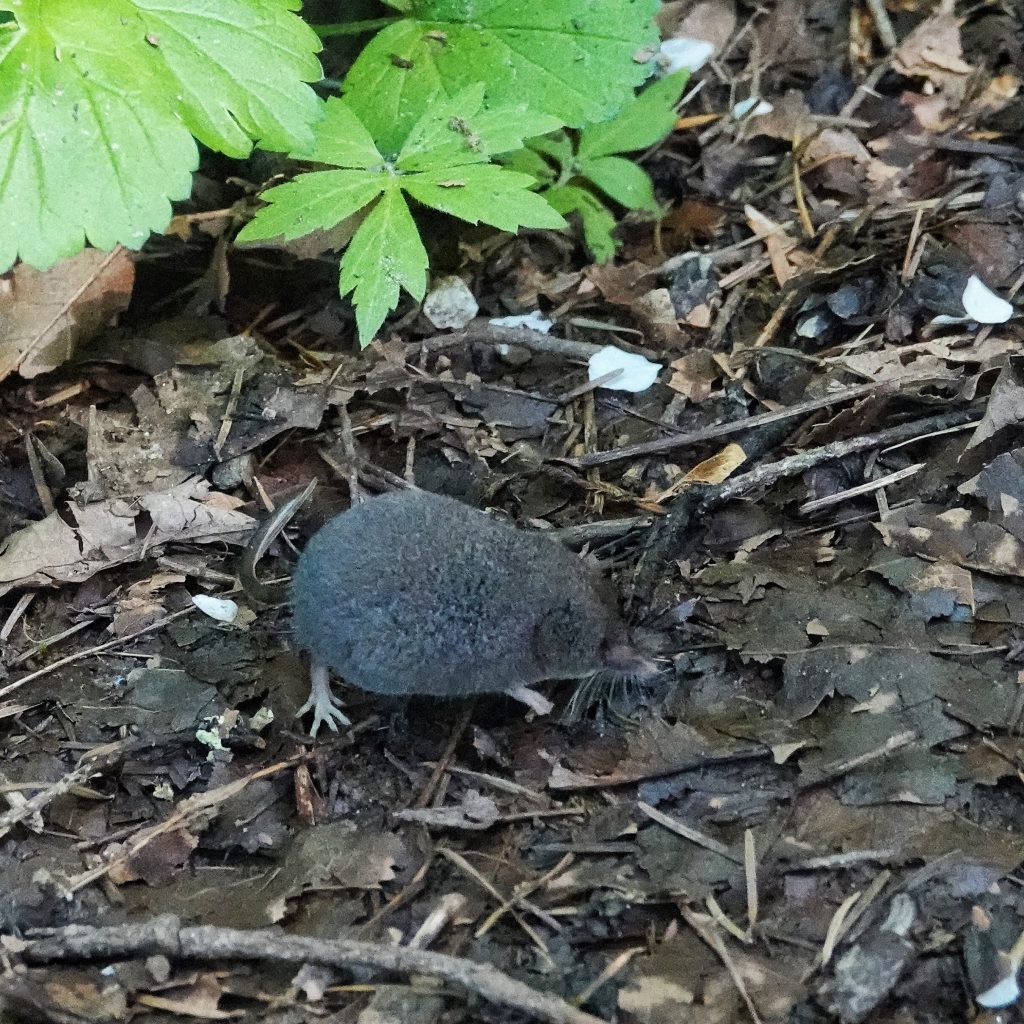
Etymology of names–Sorex is from the Latin for ‘shrew-mouse’. The specific epithet trowbridgii honors William P Trowbridge (1828-1892), a surveyor/naturalist who collected extensively on the Pacific Coast in the late 1800s
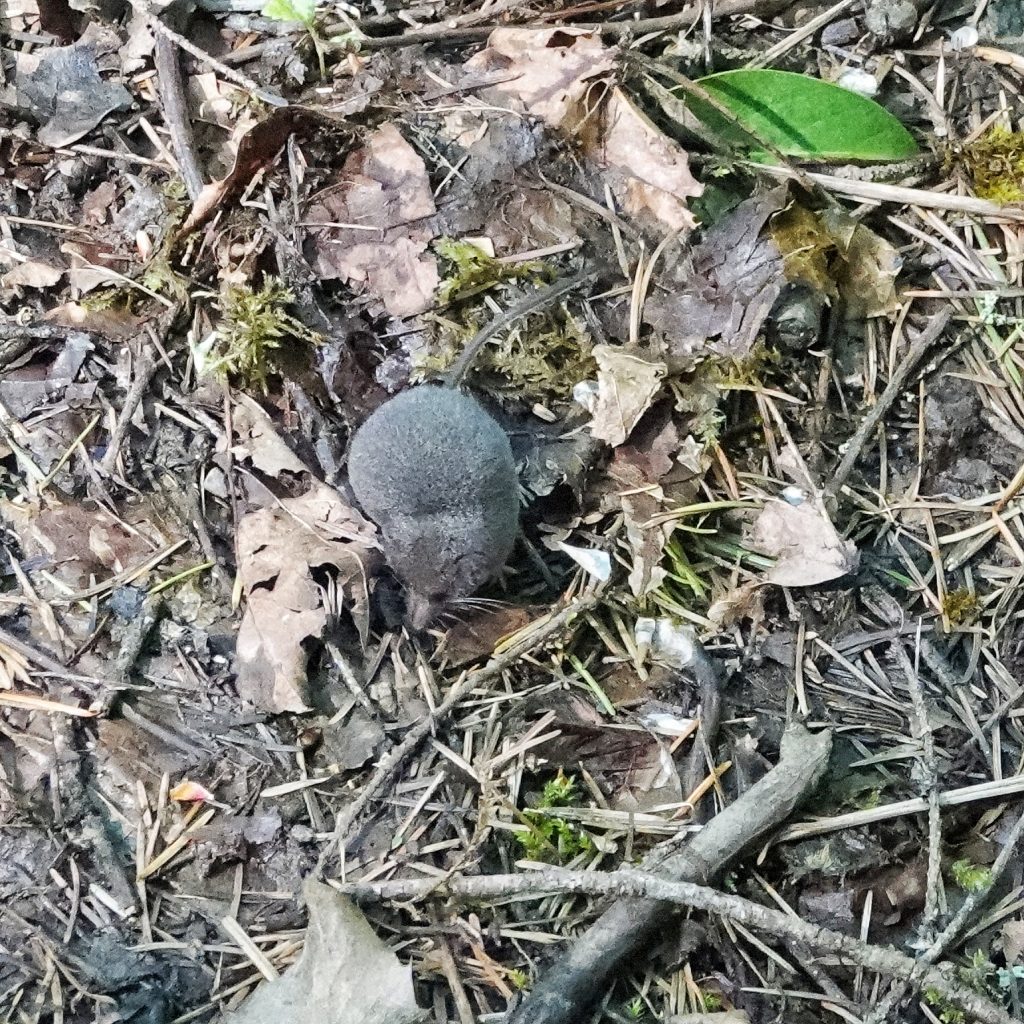
https://nrm.dfg.ca.gov/FileHandler.ashx?DocumentID=2297
Trowbridge’s shrew | Oregon Department of Fish & Wildlife
https://www.fs.usda.gov/psw/publications/documents/psw_gtr037/mammals/m007.pdf
https://en.wikipedia.org/wiki/Trowbridge%27s_shrew
https://en.wikipedia.org/wiki/William_P._Trowbridg
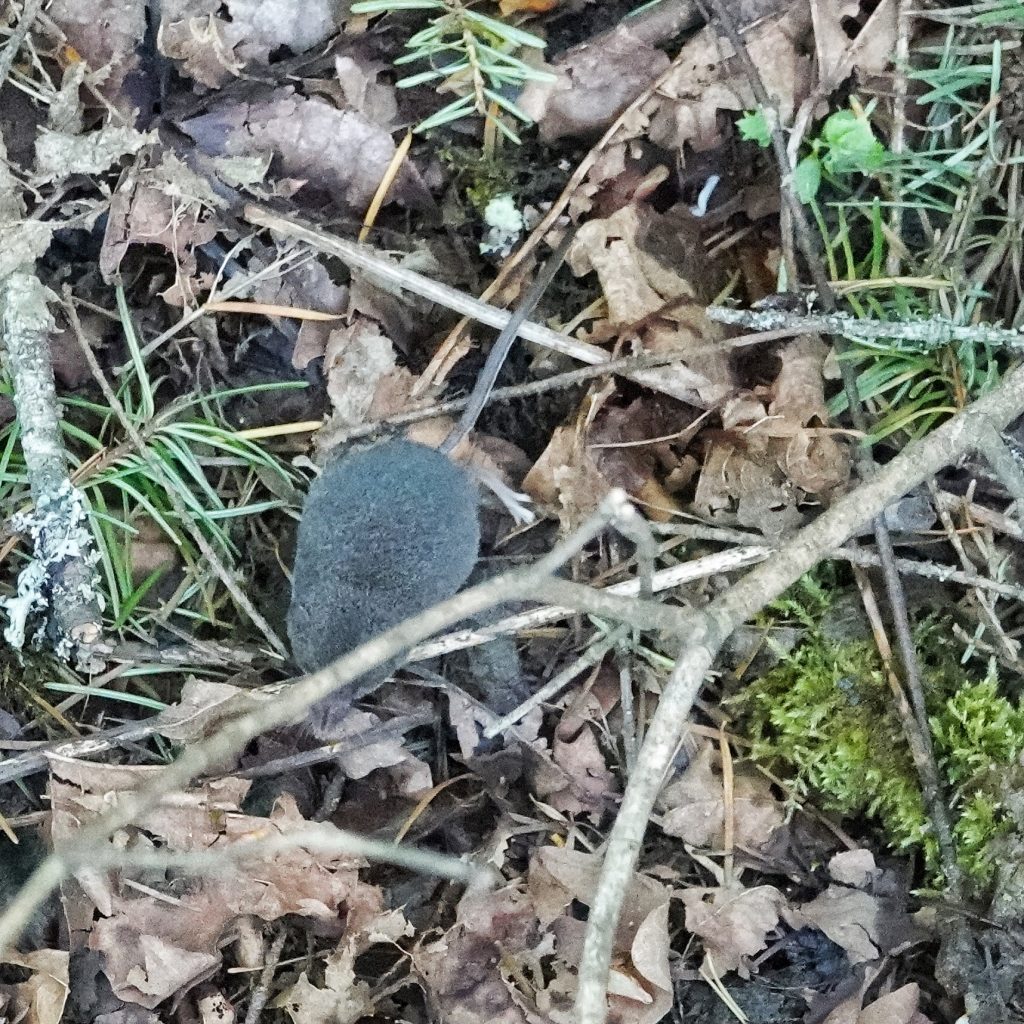
Thank you for continuing to do this series. I love them!
Thanks for your appreciation, Sharon!
I truly loved this story as I am the many time great granddaughter of William petit trowbridge.thank you so much for putting this out here.
Wow! Very cool Nicole! Thanks for sharing that with us. I appreciate your appreciation!